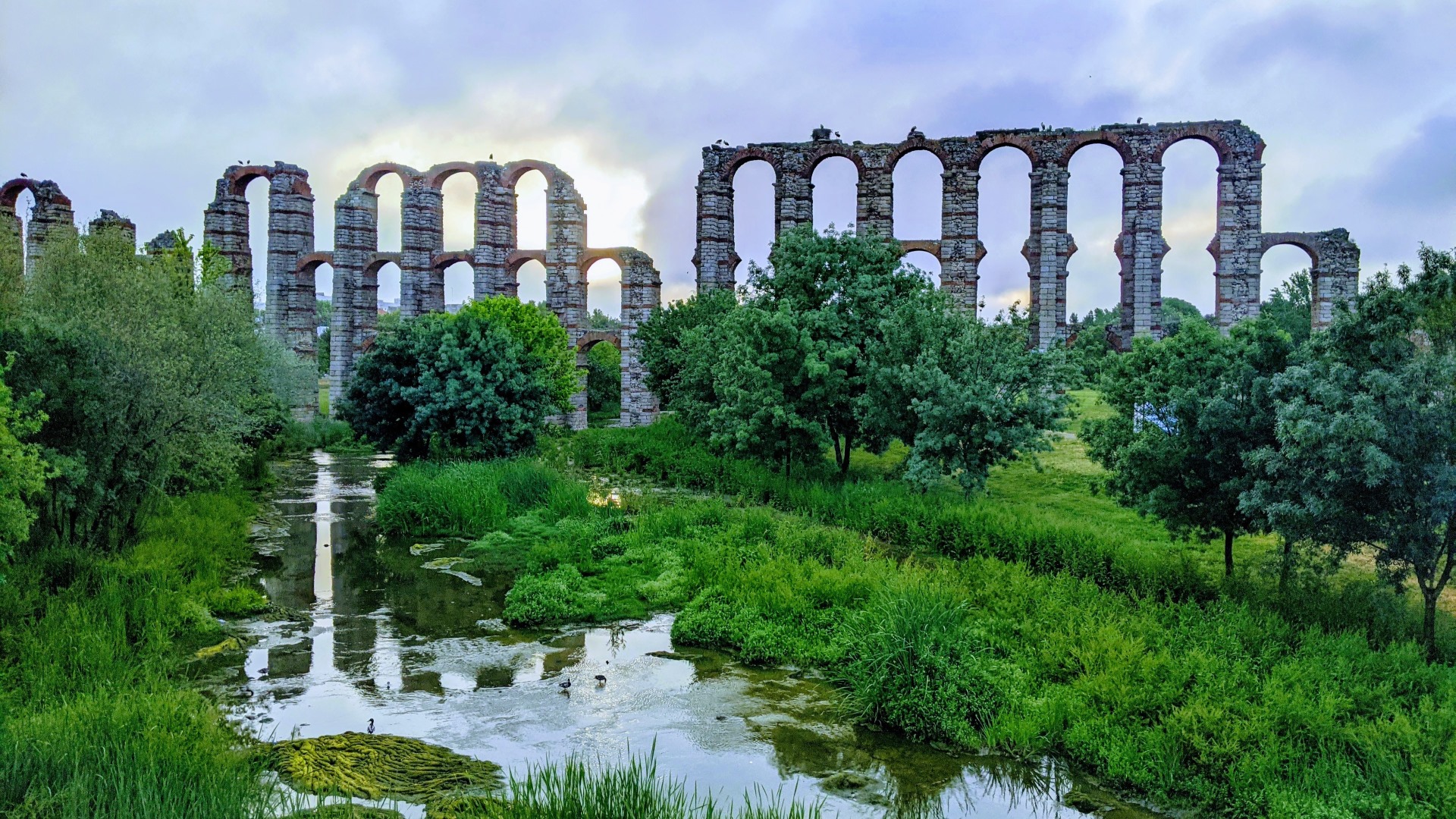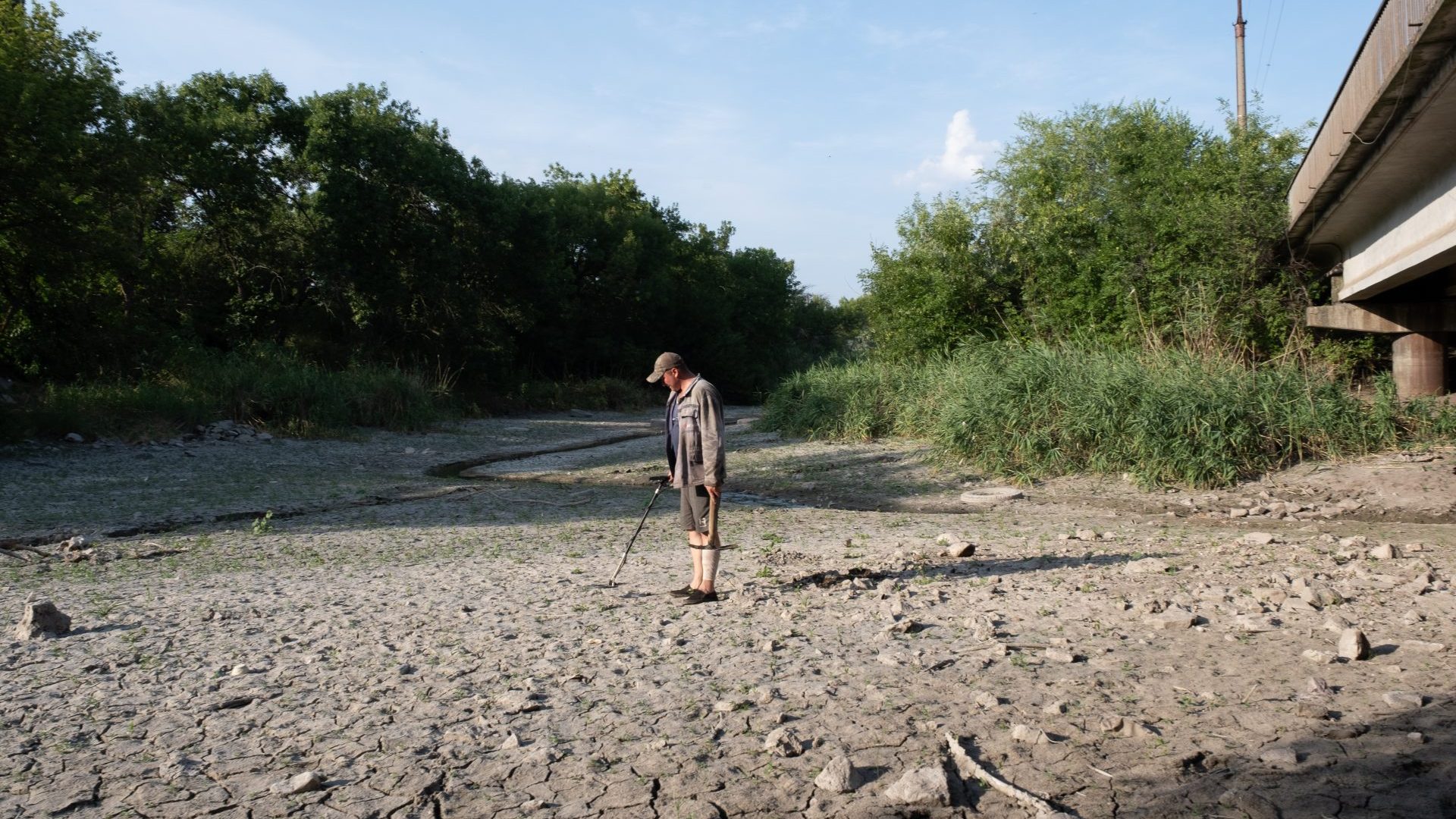It was still dark when we left the House of the Slaves of Mary and the Poor. We were figuring out which path to take when a shooting star arced above, pointing north. They are a common sight in Extremadura and well-understood these days. A thousand years ago we might have seen it differently.
The legend of St James claims that in the ninth century a miraculous star guided a shepherd to a field in Galicia where the apostle’s remains were buried. A cathedral was built there and pilgrims have been making their way to Santiago de Compostela ever since.
By far the most popular route is the Camino Francés that crosses northern Spain from France. Walkers choose it for its charming villages, company and camaraderie. Our house in southern Extremadura lies on a less trodden path: the Vía de la Plata, or Silver Route, the Roman road connecting Seville with the north. It is known for its long stages, hot weather and solitude.
Years ago, we enquired about a room at the parador in Santiago for the festival of St James on July 25. The Hostal dos Reis Católicos is Spain’s oldest hotel, commissioned in 1499 for pilgrims. It took years to secure the room, and when we finally succeeded we thought about walking there. When a blue and yellow waymarker with a stylised scallop shell appeared by our front gate, we said, “It’s a sign!”
So one morning in April we locked up the barn, walked down the lane and turned left on to the mountain road that winds north. The nearest milestone read 925.1km to Santiago.
The first sights reminded us of what we love about Extremadura: hills dotted with holm oaks and olive trees, dry stone walls, vultures circling in a blue sky. Yellow arrows daubed on gateposts pointed the way.
Some of the stages on the Vía de la Plata exceed 35km, but our plan was to walk about 20km a day. We were used to walking that distance, though never with backpacks and rarely for more than a day at a time. We needed to do it for seven weeks straight.
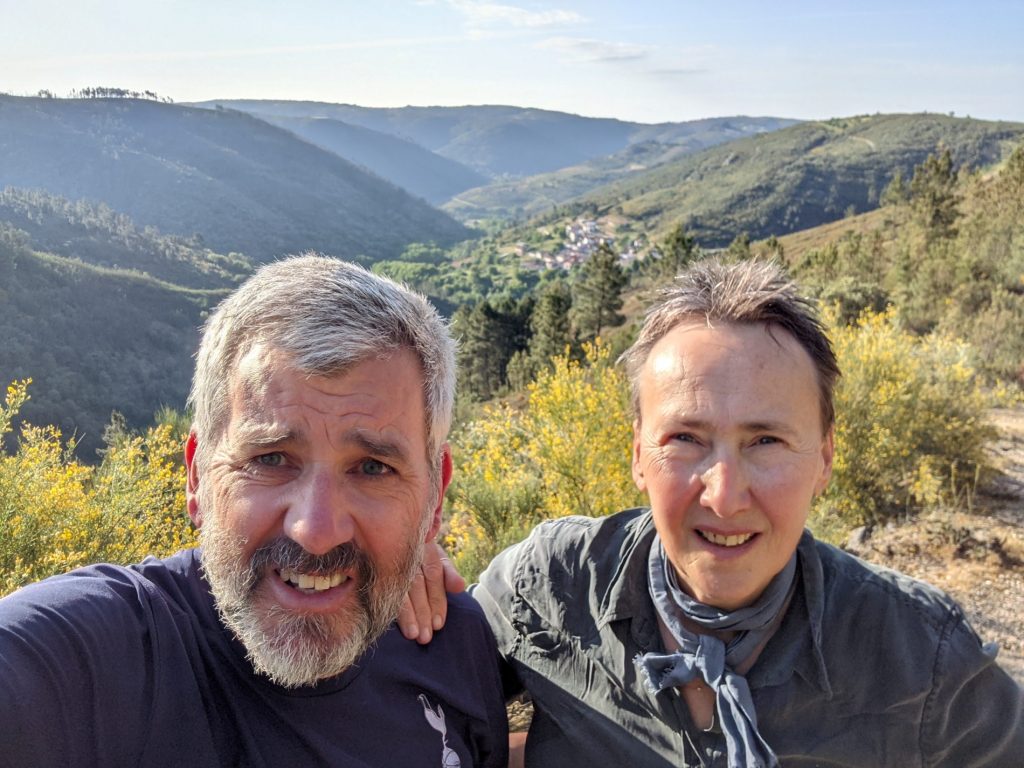
We made a gentle start, overnighting in the village of Segura de León 14km away. Its perfect hilltop castle was built by the knights of the Order of Santiago, who took the area during the Christian reconquest in the 13th century. The Camino felt real.
We woke the next morning to a message from our lodger back in London. The electricity had tripped and the alarm was going off. I pictured pilgrims of old, hearing of births and deaths on their return from Santiago. And here we were trying to organise an electrician at the weekend.
Gradually we found our rhythm on ancient sheep-droving paths, crossing streams on stepping stones, opening and closing gates behind us.
We had agreed a division of tasks. Julia, better at maps, would handle navigation and I, better at Spanish, would sort out accommodation. Key to pilgrimage harmony was that neither of us questioned the other’s choices.
At least not much. At Valencia del Ventoso we reached our first refugio, a council-run dorm with stinky plumbing and a banging door. There was no charge and no sign of other pilgrims. Although Julia didn’t say so, I sensed we should adjust the accommodation plan.
Where an albergue (hostel) was of cultural significance – or where there was no other choice – we would stay there. Otherwise we would look for a good-value casa rural (guesthouse) – ideally with a bath – and sometimes splash out on a spa or parador, one of Spain’s luxurious state-run hotels.
It was the hottest April on record, and some pilgrims were already walking at 5.30am – in the dark with a torch. That seemed to defeat the purpose, but waiting for bars to open for breakfast meant walking in the hottest part of the day. We packed bananas and pastries, set off at dawn and hoped to find a café con leche on the road.
Dinner was tricky, too, because most restaurants don’t get going until after 9pm and hostels close their doors at 10. So, in common with many working Spaniards, lunch became the centrepiece of our day.
Our first menú del día was in Torremejía, a truckstop village best known as the setting for the Nobel prize-winner Camilo José Cela’s novel The Family of Pascual Duarte, a powerful description of Extremadura in the 1930s.
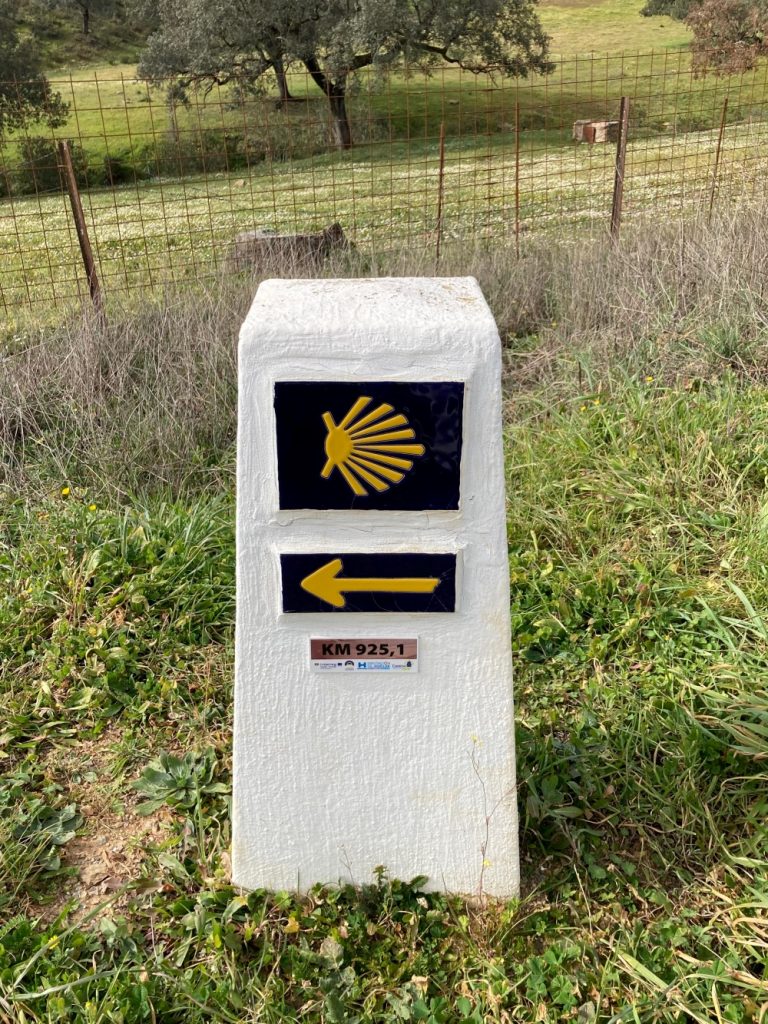
Behind a quiet bar on the main strip was a brightly lit comedor with uniformed servers. At 2.30pm we were the only guests, but it soon filled with construction workers in branded overalls. A three-course lunch – cold gazpacho, bacalao a la Riojana (salt cod in tomato and pepper sauce) and arroz con leche (rice pudding) – cost 11 euros. A bottle of local red wine was included, which the workers were diluting with Casera soda water – also included.
Our Camino became monastically simple. Alarm at 6.30am, breakfast on the road, walk for six or seven hours, arrive and shower, then find a menú del día. Afterwards, sleep it off while the sun beats down. Rise in the early evening and wander in the village, find a shop for an evening snack and something for breakfast, and be in bed by 9.30pm. Then repeat.
After seven days we reached the capital of Extremadura, Mérida, and booked into the parador to rest in its cool patio and marble bath. On our first day off we watched classical drama at the wonderfully preserved Roman theatre and toured the museum, but over a salad of oranges and olive oil we agreed that what we really wanted was to be back on the road.
The greatest joy about walking the Vía de la Plata is not visiting the Roman ruins of Mérida, nor the medieval old town of Cáceres, nor the golden architecture of Salamanca, although those are all wonderful places everyone should see.
It is about experiencing a landscape that changes slowly but rarely feels monotonous: seeing the sunrise through an olive grove, watching storks land on an aqueduct, eating bread and jamón under a motorway bridge.
It is about the opportunity to spend time in villages you’d never visit as a tourist. Places like Valdesalor, an angular new town established by the Franco regime in the 1960s. Or Aljucén, where we had a dubious Roman lunch of mussels, minced olives and violet wine (the couple at the next table were wearing togas). Or Oliva de Plasencia, where we stumbled upon the annual fiesta and queued for free paella at the village sports hall.
It’s about the kind and quirky people you meet along the way: a young French software engineer who had just quit her job, a 70-something Australian who had already walked 600km from Almería, a Basque couple who seemed to be on exactly the same rhythm as us. We bumped into them on the road, at lunch, and finally in the jacuzzi at the Roman baths in Baños de Montemayor.
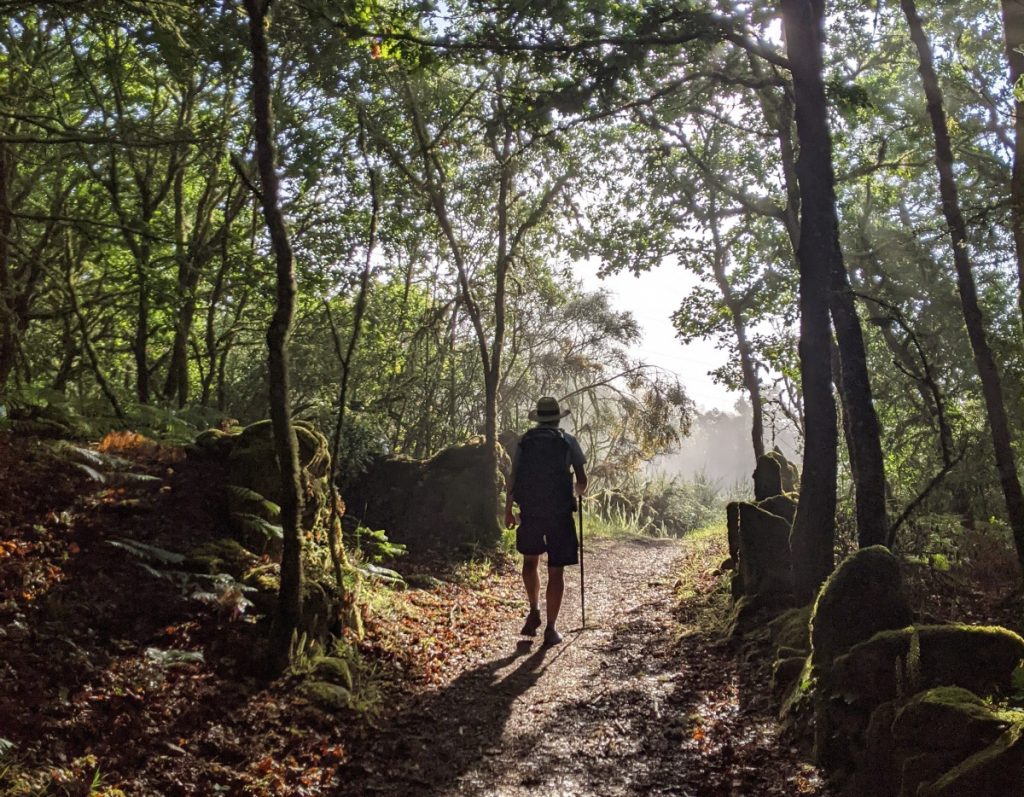
The word on the road was that the albergue at the Alcántara reservoir was closed. I WhatsApped a nearby fishing lodge that seemed to be the only other accommodation. Their one-word reply was “cerrado” (closed).
There was no alternative to walking 35km across exposed hills and high bridges in the middle of a heatwave. A sheep’s skull above the door of a derelict farm set the tone. At one remote spot, the yellow arrow on one of the granite way markers was clearly pointing in the wrong direction. Or was it?
At last we saw the hilltop village of Cañaveral shimmering on the horizon. The climb seemed endless. Then we missed a turn and had to clamber over hilly scrub. We were out of water and semi-delirious when we staggered into town. We lay on a cool stone bench and drank from the village fountain.
Rested and rehydrated, we found a bar and ordered a beer. It was still a short walk to the albergue, but as we contemplated swinging our backpacks on again, Julia noticed a doorway next to the bar with a sign that read casa rural. We had done 50,000 steps that day, we weren’t going a step further.
On our wedding anniversary we shared a dorm with a snoring Frenchman, a South African woman with foot trouble and a hipster with earbuds in who might have been British. “Do you know if the washing machine is working?” Julia asked him. He pointed to a sign hanging around his neck that read: en silencio. He wasn’t talking.
The first village in Castilla y León was in an advanced state of decay. The only businesses appeared to be the pilgrims’ albergue and a bar run by the same couple, who had taken it on when it folded during the pandemic. We were low on cash and neither place accepted cards, so we took a taxi into nearby Béjar to find a cashpoint and food.
The once-prosperous walled city was built on the wool trade. It was known as the Castilian Manchester. We walked up and down the old town, where shop after shop lay abandoned. Statues of Don Quixote and Sancho Panza stood on a deserted square. “The factories closed and people moved away,” the taxi driver told us on our way back to the hostel.
The next phase was appropriately quixotic. The landscape was flat, scattered with oaks, and the road was straight, punctuated by Roman milestones. Flocks of sunlit sheep represented the old ways, glinting windmills the new. We continued through villages where almost every crumbling building bore a sign saying “se vende” (for sale). Food was harder to come by – shops replaced by the honking horns of mobile sellers. We picked up a loaf of bread when we got the chance.
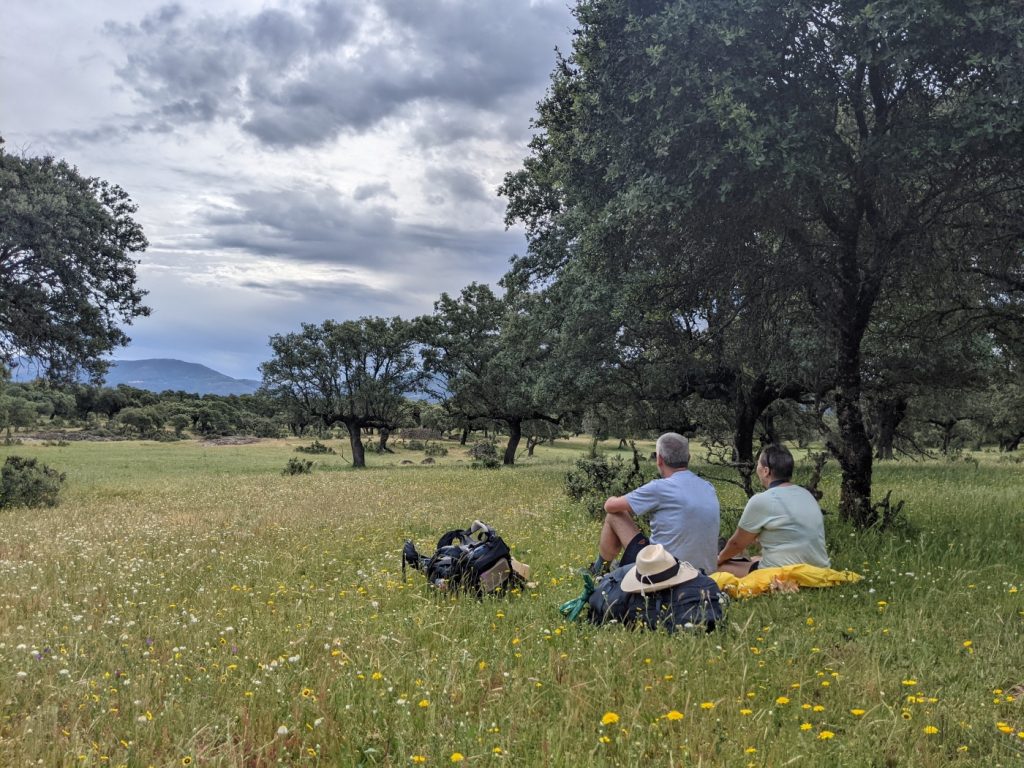
But the hospitality when we arrived at the albergue in Fuenterroble de Salvatierra was epic. The hospitalero, a selfless volunteer, greeted us with plate-sized wafers known as obleas. Being a married couple, we were shown to a matrimonial room rather than a dorm, then invited to dinner with the other pilgrims, who held hands to say grace. When we left the next morning, the hospitalero whispered, “Take your time. It will be over too soon.”
After 24 days we reached the city of Salamanca and the halfway point. In the splendour of its Renaissance streets we exchanged our first cross words. It was Mother’s Day and all the restaurants we had identified were fully booked by family groups. “Imposible!”, snorted the maitre d’ when we arrived at our third choice. We settled for a supermarket picnic on our hotel terrace.
Back on the road, the weather was dull and the landscape dominated by wheat fields and vineyards. We were struck by how unexploited this Camino remains. In Cubo del Tierra de Vino, the only shop was shut and a sign read: “Pilgrims ring this number”. The shopkeeper said: “I’ll be there in five minutes. Round up some pilgrims because I’m only going to open once.”
We liked meeting other pilgrims – a quiet German with a head wound sustained in a stepping-stone accident, a retired New Zealander on a never-ending world tour, our possibly British friend who passed us with a silent wave – but as we got closer to Santiago, numbers were rising and accommodation was harder to guarantee. We chose solitude.
We had intended to take the Camino de Sanabrés from Zamora, but now we were tempted to cut across Portugal. We knew the stages through the Montesinho Natural Park were long and mountainous – and might include bears and wolves – but beyond that there wasn’t much information. The night before leaving Zamora we concluded: “Let’s go to Portugal’’.
We rose early and refuelled on churros con chocolate, claimed by Zamorans to be Spain’s finest. Our first destination was Almendra del Pan, set on a spectacular reservoir on the Spanish side of the border. There were online mentions of an albergue, but it wasn’t clear if it was open. It was raining when we arrived and we sheltered on the porch of the village’s only bar, which was shut. A passerby stopped and said: “She’ll be back at 3pm – I’ll call her and tell her you want lunch.”
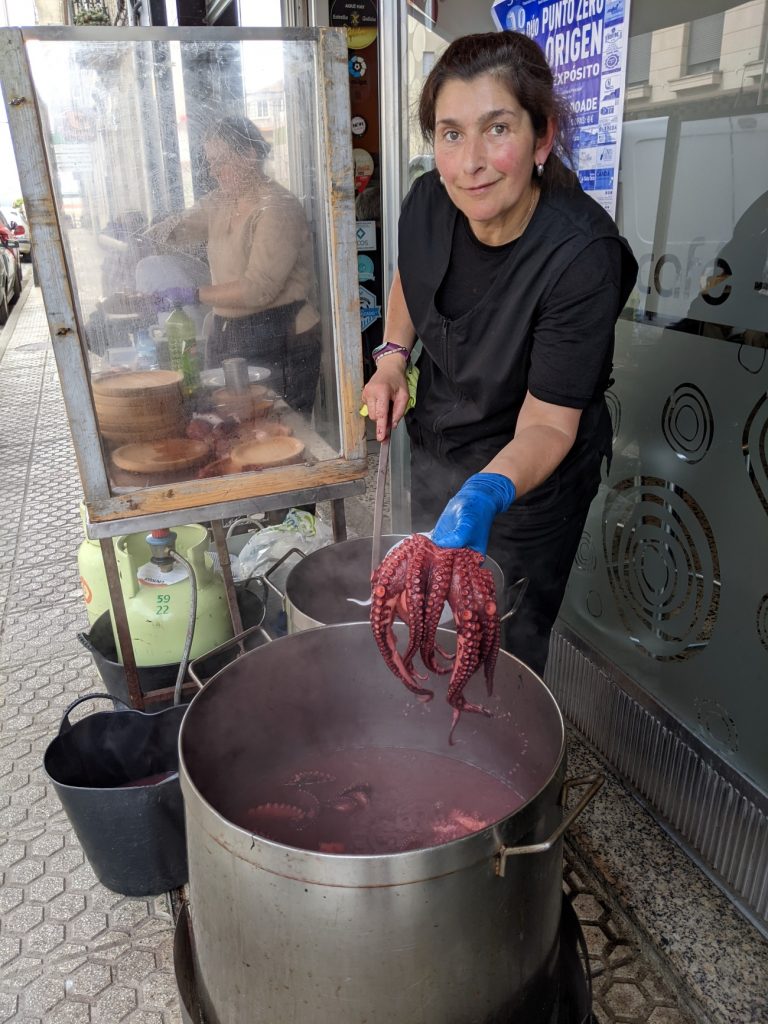
When Ángela arrived she immediately took us under her wing. Work on the albergue had been abandoned during the pandemic, she said, but we could sleep in the old schoolhouse. Her husband would take us there after lunch. The schoolhouse had no beds or furniture, just a tiled floor and a toilet. We had sleeping bags but no bedding. After an uncomfortable siesta we went back to the bar.
Ángela had cooked a large tortilla de patatas – potato omelette – which we shared for dinner. We got talking to two sisters and their husbands. When we got up to leave, one couple insisted we sleep at their house. And on cooking us eggs for breakfast.
Near Alcañices, where the treaty creating the frontier between Castile and Portugal was signed in 1297, we crossed at the now abandoned border post. This region is called Trás-os-Montes, meaning “across the mountains”. The clue is in the title.
The toughest day of the entire Camino was the walk to Segirei, a tiny village high in the hills. The route took us all the way down a wooded valley to a fast-flowing river and an old bridge, then all the way back up. We met no one. For the first time I wondered what would happen if one of us was injured or ill.
It was better not to look at the way ahead, which rose relentlessly. We hunched like hermits, stared at our feet and put one in front of the other. Later, when we looked back across the mountain, we couldn’t comprehend how we had made it.
We knew there was no hostel in Segirei, but a Facebook group had told us to ask for Anabel when we reached the village.
Anabel’s accommodation was basic, but there was a hot shower and abundant food. “You’ve eaten nothing!” she cried as we tackled a mountain of fried chicken, rice and beans, and a jug of homemade wine. Bowls of cherries and strawberries followed. “We have so many we don’t know what to do with them,” she said. Another huge spread appeared at breakfast. Then Anabel produced an omelette with gulas – baby eels. To our shame we couldn’t face it.
The path continued upward past waterfalls towards the Spanish border, and for the first time we lost track of the yellow arrow markers. We hadn’t seen a single pilgrim in Portugal.
We followed signs for Ruta do Contrabando, the smugglers’ route, and when we reached the next village we heard the chatter of a bar. We were back in Spain. It was Sunday morning and the whole village seemed to be there.
Before setting out, we had a conversation about our rules of the road. Under what circumstances would we admit defeat? Would it ever be acceptable to take a bus or taxi?
Over coffee we resumed that conversation. We had just walked a marathon across the mountains, we were still 12km from Verín and we didn’t want to miss Sunday lunch, after which everything would be shut. We asked the bar owner to call us a cab.
In Galicia, every granite waymarker is labelled with the distance to Santiago. The one at the parador of Verín read 187km. For the first time we felt sure we were going to make it. We celebrated with a platter of zamburiñas, the scallops for which Galicia is famous.
There were some tough walks ahead, but the weather had turned cool and the landscape was among the most beautiful we had seen. For the first couple of hours each morning a thick mist hung in the valleys and cuckoos called. Ancient paths twisted through woods pierced by sunlight. In every village we saw hórreos, the typical Galician huts on stilts used to store maize.
One wonderful lunch, a couple of days before we arrived in Santiago, summed up what we loved about our Camino. The village of Bandeira is one of the most unremarkable we visited, with dull apartments and a prefab hostel.
We saw a busy bar and asked if they had a menú del dia. “Claro,” the waitress said, “but today everyone is having pulpo”. The octopus women were in town and it felt like a fiesta.
Red wine came frothing in jugs, poured into white bowls rather than glasses. When the coffee came, the waitress placed a bottle of aguardiente firewater on the table. We asked how often the octopus pop-up happens. “Twice a month, on market day,” said a local enthusiast.
After 48 days and more than a million steps, we set off on our last short walk into Santiago de Compostela. At first it was as low key as every other stage, but when we walked through the archway into the magnificent old city, we saw scores of pilgrims from the Camino Francés streaming into the Praza do Obradoiro to celebrate in front of the cathedral where St James’s bones are said to lie. It was an emotional moment.
“Julia and Peter!” someone called. It was Xavi, a Spanish pilgrim we had met a few days earlier. He lay flat on the cobbles to frame the cathedral spires and took our picture. Our Camino was complete.
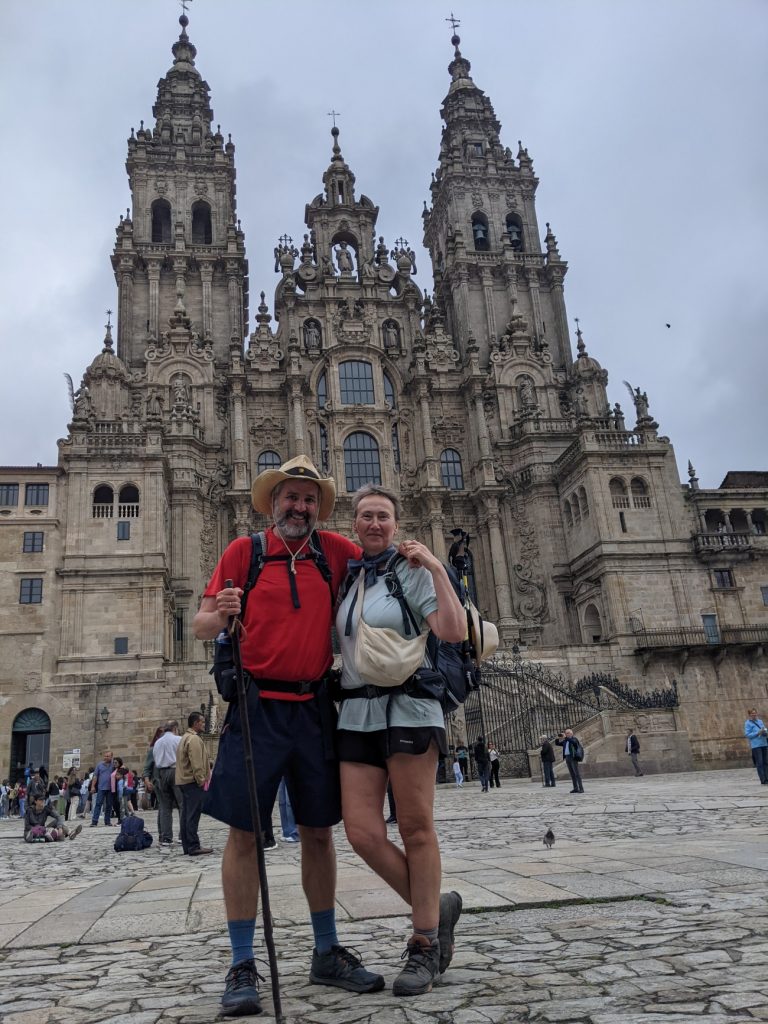
Why St James?
After the death of Christ, James the apostle was credited with being the first to preach the Gospel on the Iberian peninsula. When he was beheaded by King Herod, legend says his followers spirited his remains to Galicia by boat. He is said to have appeared on a white charger at the Battle of Clavijo in 844 and helped the Christian king Ramiro I of Asturias to defeat the Muslims who were then occupying the peninsula. Hence his nickname Matamoros (Moorslayer), for which there is about as much evidence as for St George’s dragon.
That episode points to a more rational reason for the legend. As the Christian north battled over hundreds of years to reconquer the Islamic south, the crusade needed a rallying focus. The Great Mosque in Córdoba claimed to have a bone from the arm of the Prophet Muhammad, and in the 9th century it became a pilgrimage destination for Muslims. So it followed that the Christian north should discover some bones of its own.
Another reason is more worldly: tourism. Galicia then as now was a remote region on the edge of Europe that didn’t get much passing trade. The pilgrimage industry was, and is, a great way to encourage visitors.


